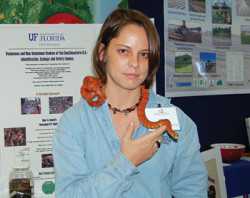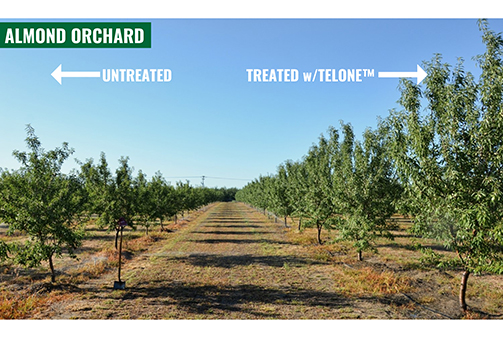How To Stay Safe When Working Around Snakes

Snakes are probably something that Florida growers and farm workers don’t think about much until they encounter one and their hearts jump up into their throats. According to Monica McGarrity, biologist with the University of Florida, the more you know about Florida snakes, the far less likely a bite will occur.
Florida has approximately 44 species of snakes, and only six of them are venomous — the eastern diamondback rattlesnake, cottonmouth (AKA water moccasin), pygmy rattlesnake, canebrake rattlesnake, copperhead, and coral snake. McGarrity advises that all snakes should be left alone to play their beneficial roles in the environment.
Where Snakes Slither
“Snakes can be found in a variety of settings, depending on the ecology of the species of snake,” says McGarrity. “For example, venomous water moccasins and harmless (although defensive) watersnakes are often found around water. Avoid the edges of lakes, ponds, and canals, especially if the grass has not been mowed.
“Snakes also are often found in brush or wood piles and in areas with tall grass, so keep grass mowed in high-use areas, and keep brush and debris away from these areas. Leather gloves should be worn when possible, especially when moving brush or picking vegetables, and thick boots and loose pants should be worn when working in tall grass.”
The cottonmouth and the tiny pygmy rattlesnake are probably the most commonly encountered venomous snakes in Florida, and both might be encountered at farm sites. Water moccasins are usually found near water, like irrigation canals and retention ponds. Pygmy rattlesnakes are small, have a virtually inaudible rattle, and are experts at camouflage.
Let It Be
If growers and farm workers come across a snake, McGarrity has simple advice, “Leave it be!” Most snake bites occur when people attempt to harass, handle, or kill a snake. Give the snake space, and it will usually try to flee.”
Treat A Bite Right
“If workers are bitten by a venomous snake or are uncertain about the type of snake that bit them, they should get away from the snake and seek medical attention immediately,” says McGarrity. “Call 911. It is also a good idea to call the Poison Control Center’s National Hotline (800-222-1222) to provide the name and phone number of the hospital to which the victim will be taken and request that a toxicologist call the emergency room. Do not attempt to catch or kill the snake in order to identify it.”
Keep the bite victim warm and as calm as possible, limit activity, and keep the bitten extremity (finger, arm, or leg) lower than the victim’s heart. Remove any constricting clothing or jewelry from the bitten extremity. Try to keep a record of the time of the bite, and the time that various symptoms appear. McGarrity says a permanent marker can be used to outline the extent of swelling and time. She stresses not to re-enact old westerns and attempt to cut an “X” and suck out the venom. Other no-nos include applying heat or ice, allowing the victim to drink alcohol, or delaying seeking medical attention.









